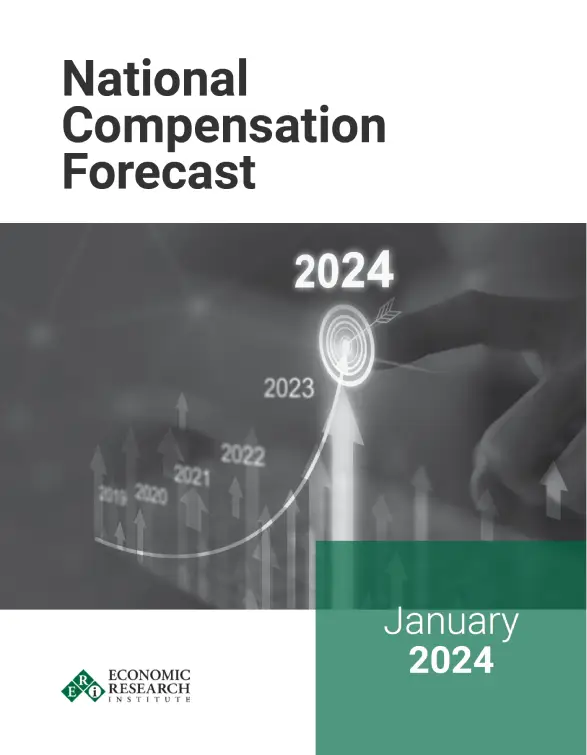A cost of living index is a broad measurement of the cost of different expenses expected by the average person living in a certain location. Some of the categories tracked include health care costs, transportation, housing, groceries, and more. These numbers are tracked in specific locations to gauge how much it costs to live in a certain area over time.
Another good way to interpret this general number is to ask the question, "How many goods and/or services does a specific amount of money purchase in a given location?" An easy example would be that $100 goes further in Reno, Nevada, than it does in San Francisco, California. The goods and services tracked are need-based, meaning entertainment and other incurred expenses not required to live in a certain area are not tracked.
The main purpose of a cost of living index is to help a person quickly decide if moving from one location to another will increase or decrease quality of life.
Cost of Living Information
Exeter Cost of Living Index
Is Exeter an expensive place to live?
The cost of living index is calculated based on accumulating the cost of food, transportation, health services, rent, utilities, taxes, and miscellaneous.
When ranking the most expensive cities, Exeter, New Hampshire is ranked
1,726/5,673 cities in the US
11/38 cities in New Hampshire
Cost of Living compared to National Average
Below Average
Average
Above Average
0
11/38 cities in New Hampshire
Cost of Living compared to New Hampshire
Below Average
Average
Above Average
0
Cost of Living Comparison Calculator
Use our cost of living calculator to compare the cost of living between different locations and utilize our cost of living information to research living expenses in various areas.
Compare Locations
Assumptions Used to Calculate the Average Cost of Living in Exeter:
Need more details? Upgrade to ERI's Assessor Platform for more comprehensive information.
Affordability Breakdown
Below Average
Average
Above Average
0
Food info
Transportation info
Housing info
Health info
The following are collected for use in calculating cost of food: meats, dairy products, produce, bakery products, miscellaneous grocery products, fast food, and average casual restaurant.
The data used to calculate the cost of food score is a sample of data pulled from ERI Economic Research Institute' Relocation Assessor. For a more detailed food price index, please try a free demo of the cloud-based Relocation Assessor.
The data used to calculate the cost of food score is a sample of data pulled from ERI Economic Research Institute' Relocation Assessor. For a more detailed food price index, please try a free demo of the cloud-based Relocation Assessor.
The cost of transportation score uses local data on commuting patterns and city dispersion combined with fuel cost factors, public transportation, and efficiency patterns of public transportation in relationship to a transportation price level index. A relative cost of airline travel component is also included. In major cities, where parking is a substantial cost, estimates are included for parking expenses during regular business hours.
Transportation factors also include the yearly total cost of operating automobile(s) and/or equivalent commuter expense for ten miles.The cost of operating an automobile defaults to 20 miles round trip daily, maintenance, taxes and licensing fees, insurance, gasoline costs including taxes, etc.Costs vary according to changes to number of vehicles, combined value and combined prose, and annual mileage/kilometers.Sources include IRS allowed reimbursement policies, local gasoline, insurance, licensing and maintenance/service prices.
The data used to calculate the cost of transportation score is a sample of data pulled from ERI Economic Research Institute's Relocation Assessor. For a more detailed transportation price index, please try a free demo of the cloud-based Relocation Assessor.
Transportation factors also include the yearly total cost of operating automobile(s) and/or equivalent commuter expense for ten miles.The cost of operating an automobile defaults to 20 miles round trip daily, maintenance, taxes and licensing fees, insurance, gasoline costs including taxes, etc.Costs vary according to changes to number of vehicles, combined value and combined prose, and annual mileage/kilometers.Sources include IRS allowed reimbursement policies, local gasoline, insurance, licensing and maintenance/service prices.
The data used to calculate the cost of transportation score is a sample of data pulled from ERI Economic Research Institute's Relocation Assessor. For a more detailed transportation price index, please try a free demo of the cloud-based Relocation Assessor.
The following are collected for use in determining the cost of housing score: square footage, monthly rent, home prices, and utilities.
For the estimated monthly rent prices, data on average and median rent price per square foot on a 900 square foot (2 bed room), unfurnished higher-quality apartment is collected.Estimated apartment rental prices assume a standard lease (usually 1-year) is signed.The same geographic assumptions and data standards used for home prices are applied to data collection and survey procedures.Utilities are estimated based on costs for common heating/cooling/sources of energy for the location. Water and sewer cost estimates are also included.
The data used to calculate the cost of housing score is a sample of data pulled from ERI Economic Research Institute's Relocation Assessor. For a more detailed housing price index, please try a free demo of the cloud-based Relocation Assessor.
For the estimated monthly rent prices, data on average and median rent price per square foot on a 900 square foot (2 bed room), unfurnished higher-quality apartment is collected.Estimated apartment rental prices assume a standard lease (usually 1-year) is signed.The same geographic assumptions and data standards used for home prices are applied to data collection and survey procedures.Utilities are estimated based on costs for common heating/cooling/sources of energy for the location. Water and sewer cost estimates are also included.
The data used to calculate the cost of housing score is a sample of data pulled from ERI Economic Research Institute's Relocation Assessor. For a more detailed housing price index, please try a free demo of the cloud-based Relocation Assessor.
The following are collected for use in the health care grade estimate: a "check-up" to a primary care physician, a regular cleaning with a dentist, and the cost of a widely prescribed non-generic pharmaceutical drug.
Health care services include out-of-pocket costs for the employee and carrier zone rates by location, along with hospital costs. They are based primarily upon group medical benefits as tracked by national carriers and in-house methodology. Health care services vary by family size.
The data used to calculate the cost of health care score is a sample of data pulled from ERI Economic Research Institute's Relocation Assessor. For a more detailed health care price index, please try a free demo of the cloud-based Relocation Assessor.
Health care services include out-of-pocket costs for the employee and carrier zone rates by location, along with hospital costs. They are based primarily upon group medical benefits as tracked by national carriers and in-house methodology. Health care services vary by family size.
The data used to calculate the cost of health care score is a sample of data pulled from ERI Economic Research Institute's Relocation Assessor. For a more detailed health care price index, please try a free demo of the cloud-based Relocation Assessor.
In this graph, we break down the overall cost of living into some of the major contributing factors. ERI downloads housing sales data from commercially available sources. Gasoline, consumables, and medical care premium costs are also collected from authoritative online databases. ERI research staff then audits these sources to help aid them in finding the cost of living compared to other locations.
Cost of Labor
The exact percent cost of labor differential can be found in ERI's Assessor Platform.


Higher than US Average
Area Information
Exeter
Average Salary
$67,564 (USD) Yearly$32 (USD) Hourly
Median Household Income
The median household income is
$68,984
Median House Price
The median home price is
$240,500
State Taxes
This ranking is based on income tax rates
6th lowest
state tax rate in the US
Yearly Crime Overview
Total Population:
15,596
Crime Rate:
0.69%
US National
Exeter
Violent Crime
Property Crime
Total Crime
The crime rate in Exeter is 0.69%. Crime rate is calculated by dividing the number of reported crimes by the total population.
Violent Crime Overview
Total Violent Crime:
23
Violent Crime Rate:
0.15%
US National
Exeter
Murder
Robbery
Assault
The violent crime rate in Exeter is 0.15%. Violent crime rate is calculated by dividing the number of reported violent crimes (murder, robbery, and assault) by the total population.
Property Crime Overview
Total Property Crime:
85
Property Crime Rate:
0.55%
US National
Exeter
Burglary
Larceny
Vehicle Theft
Arson
The property crime rate in Exeter is 0.55%. Property crime rate is calculated by dividing the number of reported property crimes (burglary, larceny, motor vehicle theft, and arson) by the total population.
*The US National numbers are adjusted to be equivalent to Exeter's population of 15,596.
Notes
About Exeter
Description: Exeter is a town in Rockingham County, New Hampshire, United States. Its population was 16,049 at the 2020 census, up from 14,306 at the 2010 census. Exeter was the county seat until 1997, when county offices were moved to neighboring Brentwood. Home to Phillips Exeter Academy, a private university-preparatory school, Exeter is situated where the Exeter River becomes the tidal Squamscott...
How expensive is it to live in Exeter?
Based on our Exeter cost of living calculator, Exeter is 12% more expensive than the national average and 3% more expensive to live in than the average city in New Hampshire. This assumes a $72,000 annual salary and a 2 Bedroom Apt. Food costs in Exeter are less affordable than average in the United States. Transportations costs in Exeter are more affordable than average in the United States. Housing costs in Exeter are less affordable than average in the United States. Health care costs in Exeter are less affordable than the US average.What does it cost to move to Exeter?
The cost of moving to Exeter depends on a lot of factors. The biggest factor is the difference in cost of living between the two locations, which can be determined using ERI's cost of living calculator. The other major factor is the distance between the two locations.Search
Browse Cost of Living in Other Locations
Cost of Living by Country
Cost of Living by State
FAQs
What is a cost of living index?
How did we calculate our cost of living index?
Cost of living data are derived from ERI's cost of living surveys and web digitization of public domain records. Data are comprised of health care, transportation, housing, and grocery costs, which are then averaged out across the county. On the graphs above, the "0" represents the country’s average. The percentage can either be lower, expressed by a negative number, or higher than the national average, expressed by a positive number. The important part to remember is the locations are compared to an average of other locations.
What is cost of labor?
Cost of labor may sound like cost of living, but it refers to the price of labor as opposed to the cost to living in a location. Cost of labor refers to all the upfront costs that an employer must pay when hiring work from a particular area. This factors in costs such as the payroll taxes and required benefits when hiring from a particular location. This number is displayed as a percent average higher or lower than the national average. To see the cost of labor data for a particular location, please fill out this quote form with your location of interest.
You May Also Like
White Papers
White Papers

Planning Compensation Incentives That Maximize Workforce Engagement
Improve employee engagement and performance by implementing compensation incentive plans into your strategy.
Read More

Planning Global Compensation Budgets for 2024 - March Updated
Learn about global compensation trends and salary increases for 2024, so you can make more informed salary planning decisions.
Read More

National Compensation Forecast January 2024
Review compensation trends and get guidance on expected total salary increases for the upcoming year with ERI's National Compensation Forecast.
Read More

How to Market Price Jobs
Learn how to market price a job by using salary surveys to gain market intelligence and more.
Read More
Blogs
Blogs

How to Conduct a Compensation Analysis
Learn how to conduct a compensation analysis to ensure your compensation practices align with your organization's goals.
Read More

Common Compensation Terms & Formulas - Updated January 2023
Learn commonly used compensation terms and formulas related to the topic of Salary Range and stay up to date on new and emerging terms with ERI.
Read More

North American Minimum Wage Updates - April 2024
Learn about the latest updates for North American minimum wage changes on a monthly basis.
Read More